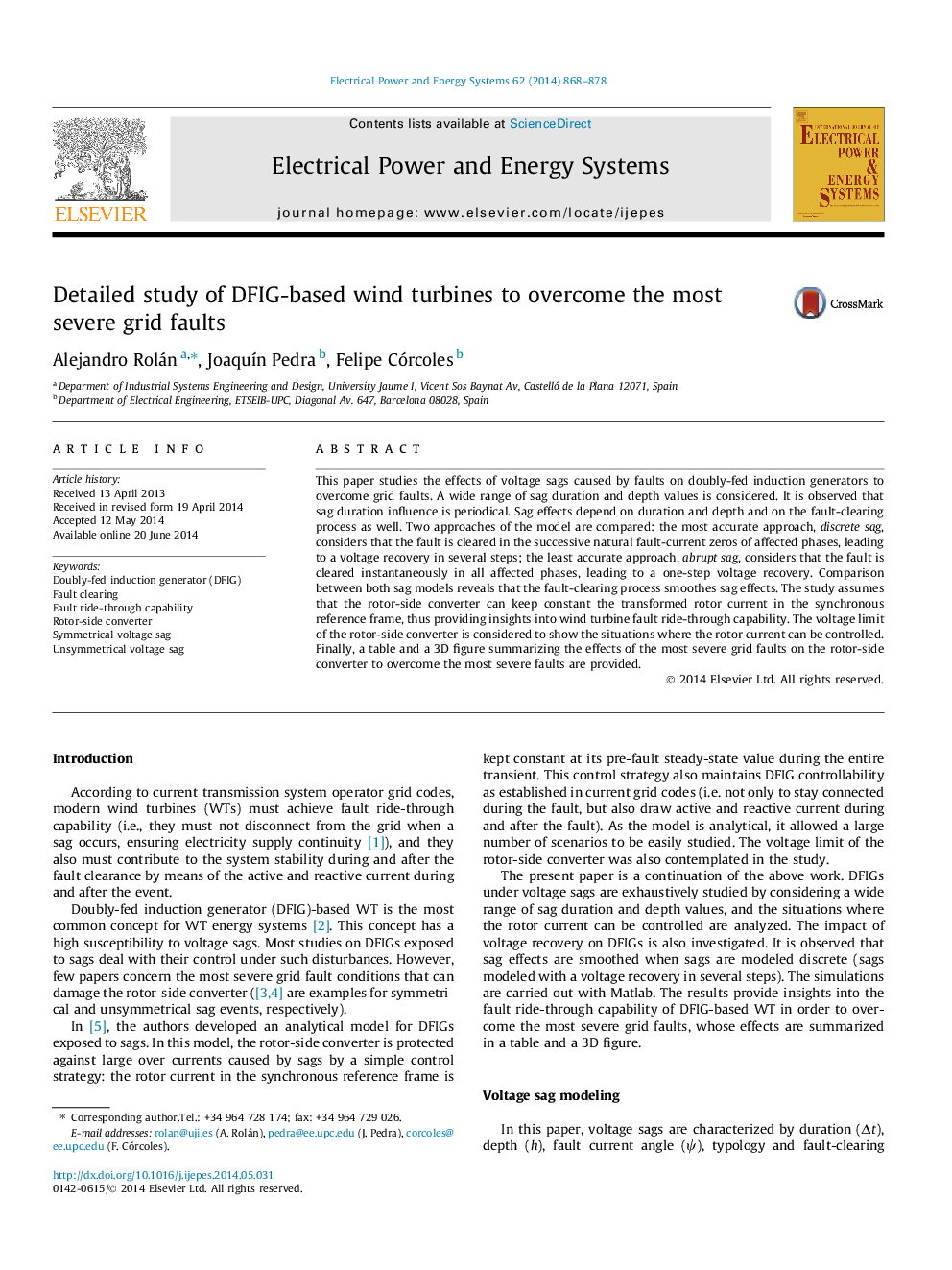| کد مقاله | کد نشریه | سال انتشار | مقاله انگلیسی | نسخه تمام متن |
|---|---|---|---|---|
| 398398 | 1438738 | 2014 | 11 صفحه PDF | دانلود رایگان |

• Effects of both symmetrical and unsymmetrical sags on DFIG are studied.
• The rotor-side converter is assumed to keep constant the transformed rotor current.
• The voltage limit of the rotor-side converter is considered.
• Symmetrical sags are more severe than unsymmetrical ones.
• Two approaches of the sag model are compared: abrupt (the most severe) and discrete.
This paper studies the effects of voltage sags caused by faults on doubly-fed induction generators to overcome grid faults. A wide range of sag duration and depth values is considered. It is observed that sag duration influence is periodical. Sag effects depend on duration and depth and on the fault-clearing process as well. Two approaches of the model are compared: the most accurate approach, discrete sag, considers that the fault is cleared in the successive natural fault-current zeros of affected phases, leading to a voltage recovery in several steps; the least accurate approach, abrupt sag, considers that the fault is cleared instantaneously in all affected phases, leading to a one-step voltage recovery. Comparison between both sag models reveals that the fault-clearing process smoothes sag effects. The study assumes that the rotor-side converter can keep constant the transformed rotor current in the synchronous reference frame, thus providing insights into wind turbine fault ride-through capability. The voltage limit of the rotor-side converter is considered to show the situations where the rotor current can be controlled. Finally, a table and a 3D figure summarizing the effects of the most severe grid faults on the rotor-side converter to overcome the most severe faults are provided.
Journal: International Journal of Electrical Power & Energy Systems - Volume 62, November 2014, Pages 868–878